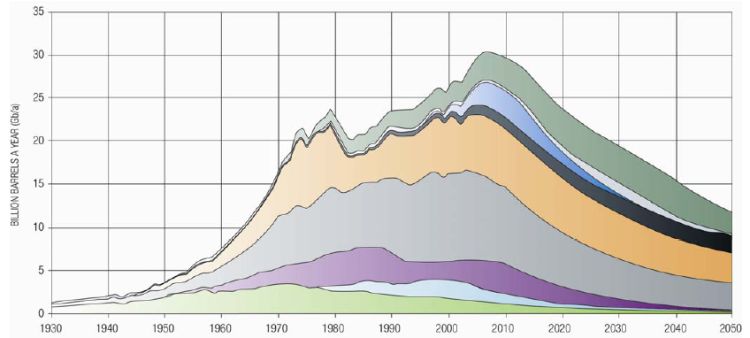Gold and Oil
Gold and Oil have an important relationship with the Forex market. Often these two commodities are used as a leading indicator in making trading decisions in the Forex market.
Gold
Ok, before going through some analysis let’s take a look at the following table:
Gold Production by Country

[Table 2]
Source: http://www.goldsheetlinks.com/production.htm
Why would gold have a negative or inverse relationship with the USD if United States is the second larger producer of Gold (out-placed Australia in 2006)?
The answer is simple (or maybe not)…
The obvious reason behind this inverse relationship is that gold is always priced against the USD: naturally a strong dollar will buy more ounces of gold (and a weak dollar will buy less ounces of gold).
But there is also another less evident reason of this inverse relationship: decades ago, during periods of uncertainty investors tend to migrate away their capital from USD to gold as a safe-haven.
Ok, to check some numbers: The USD has fallen to historic lows against some currencies including: EUR, CHF and CAD while gold (XAUUSD) has reached all time highs.
Majors that have a positive or direct relationship with gold are the Canadian dollar and the Australian dollar.
AUD – Australia is the third largest producer of gold in the world and as a result, the correlation coefficient of the AUD and Gold prices is close to 80%. So the AUD always benefits from rising gold prices and it also decreases when gold prices decline.
CAD – Canada is the third world largest exporter of the commodity. This makes the CAD and Gold move in the same direction, although its correlation coefficient isn’t as large as the AUD and Gold.
What would be the case for the EUR or other major currencies where there is no relationship (at least not a clear one)?
Other majors will have a direct relationship with gold because both of them (majors and gold) are priced in USD.
Oil Prices
Generally speaking an increase in the price of oil results in increasing costs of transportation, utility and heating costs as well as the cost of practically every finished product (particularly in oil-dependent economies such as the US, China India and other developed countries).
Arguments in favor of an indirect relationship between oil and the USD:
US accounts for only 5% of the world’s population but it consumes 25% of the world’s fossil fuel-based energy.
US imports about 75% of its oil, but owns only 2 percent of world reserves.
Because of this dependency on both oil and foreign suppliers, any increases in price or supply disruptions will negatively influence the US economy (hence the USD) to a greater degree than any other nation.
Canada is one of the few developed countries who are net exporters of energy (i.e. oil). Canada has the second largest oil reserves in the world (only behind Saudi Arabia). For this reason the Canadian dollar has a very tight positive relationship with oil prices.
Where is oil heading?
Oil experts adopted Hubbert’s Curve to forecast oil production for the following decades:

[Image 1]
Source: Nick Barisheff
According to their prediction, world oil production was to peak sometime around the second half between 2000 and 2010 (like now?). Right now the oil barrel is pretty close to US$100, but what could happen to if this prediction is true? It will probably keep going that way for a few more hundreds…
Brain Feeder 4
Recently a few presidents from large oil producer countries have announced their concerns about the weak US dollar and have declared they would be willing to change the oil pricing in Euros instead of US dollars. What to you think could happen to the USD if they price their oil barrels in Euros instead of US dollars?